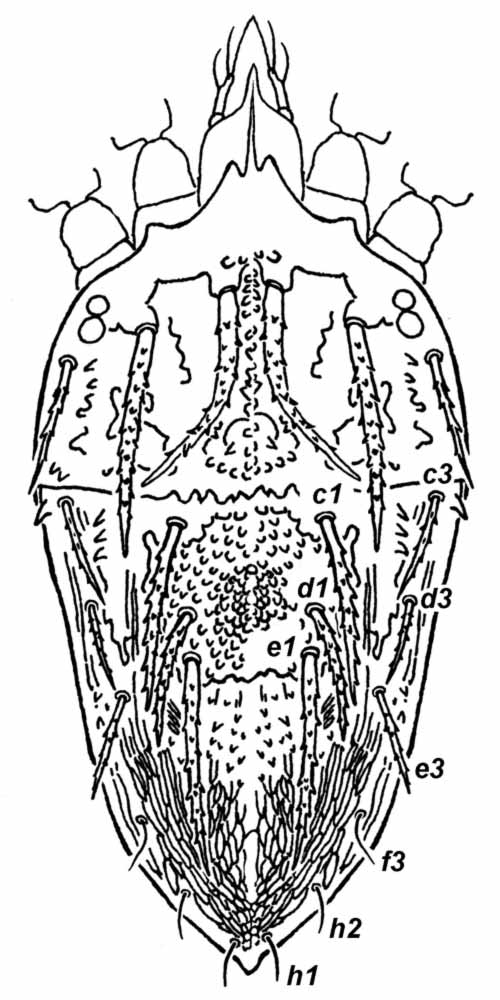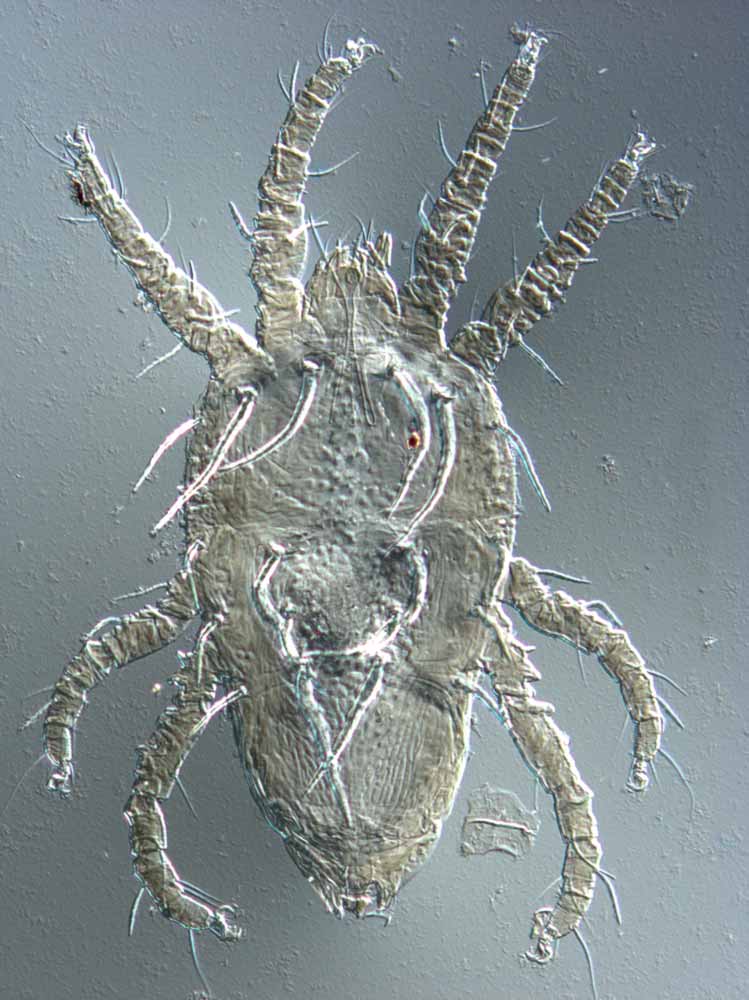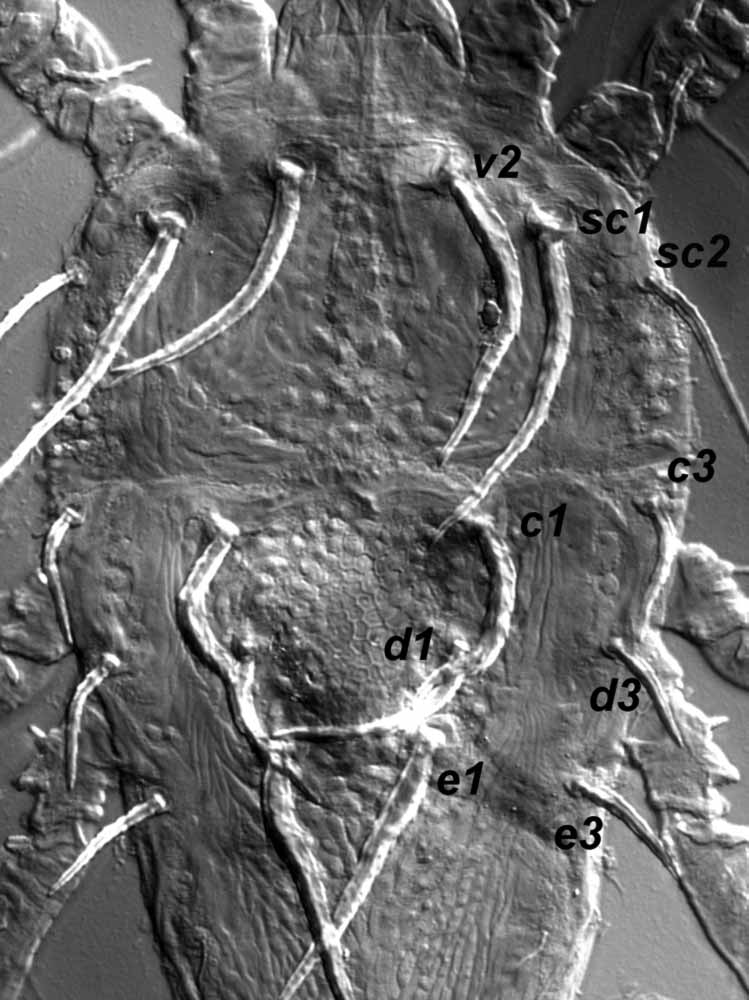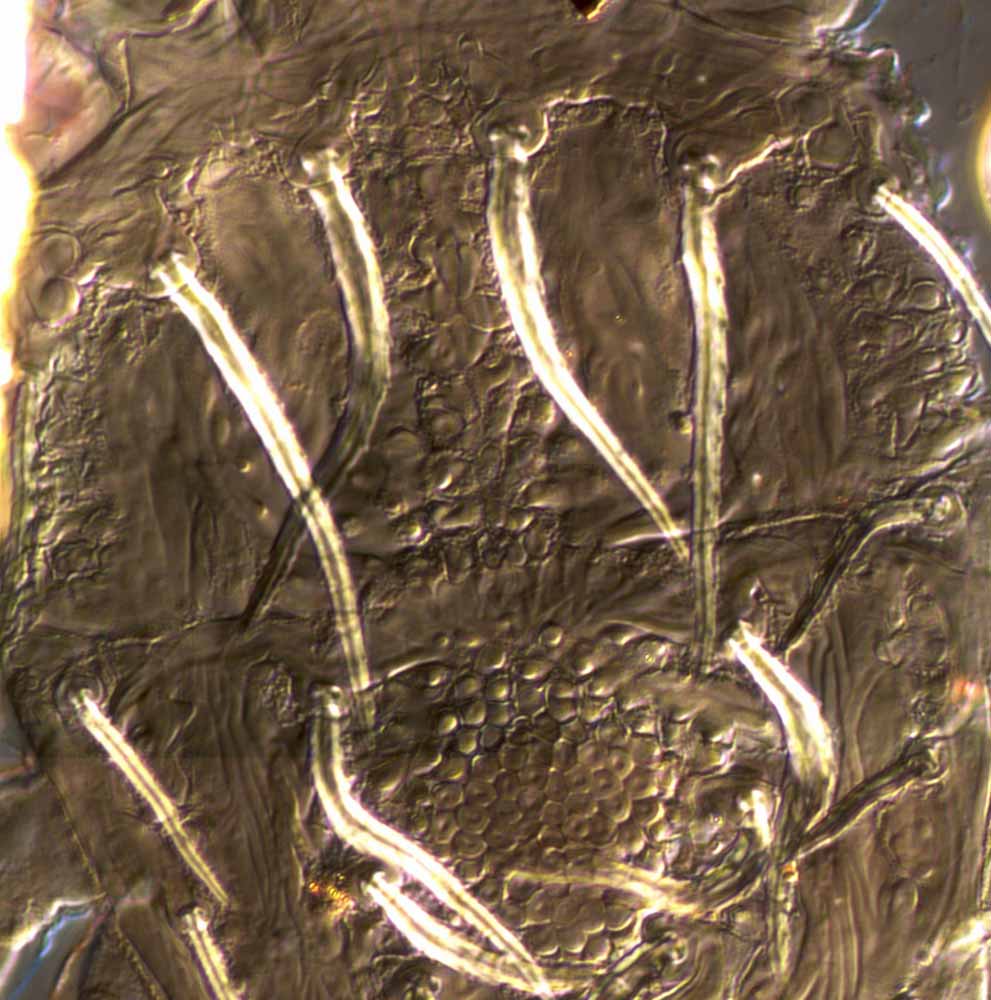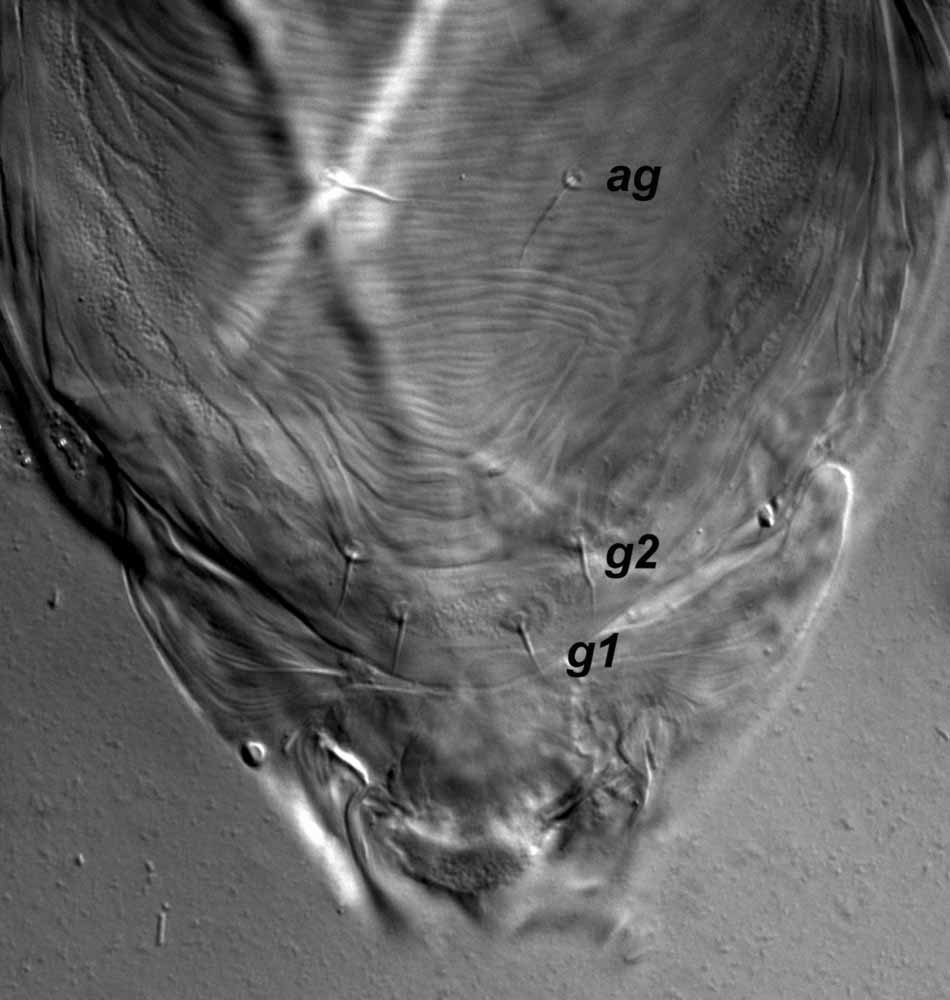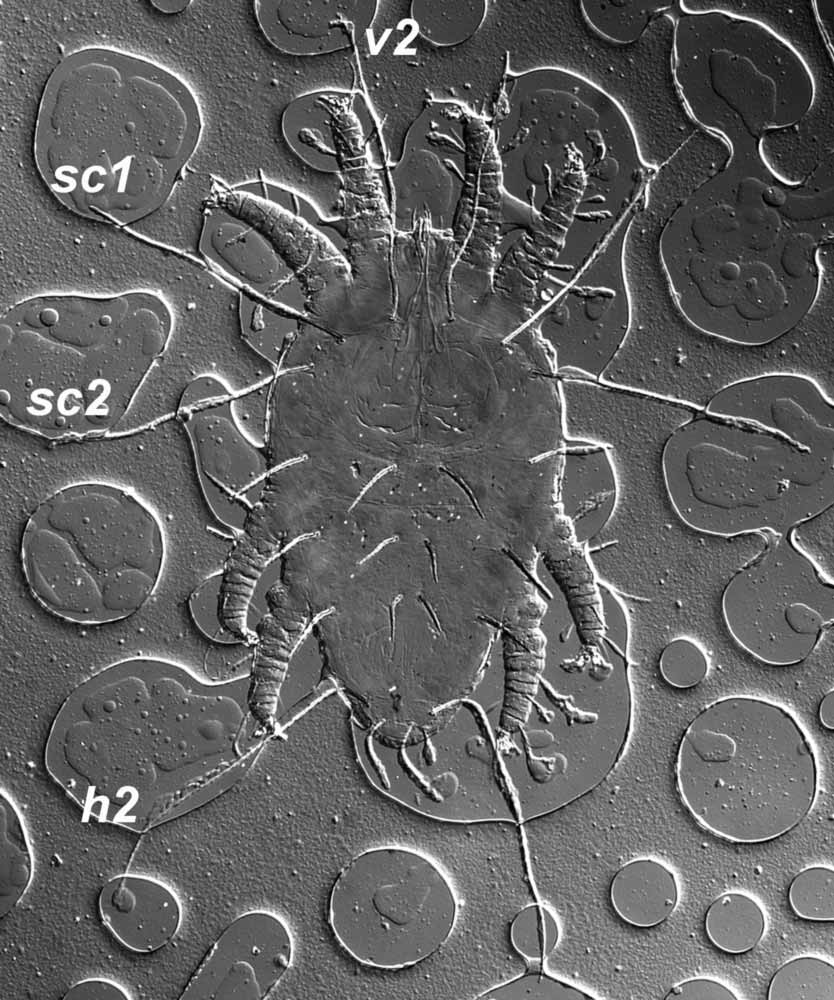Priscapalpus
|
Fig. 1. Priscapalpus macropilis female dorsum (after De Leon 1961). |
|
Fig. 2. Priscapalpus macropilis female dorsum (type specimen). |
|
Fig. 3. Priscapalpus macropilis female dorsum (type specimen). |
|
Fig. 4. Priscapalpus macropilis female prodorsum (type specimen). |
|
Fig. 5. Priscapalpus macropilis female venter, with detail of genital region (type specimen). |
|
Fig. 6. Priscapalpus macropilis deutonymph dorsum (type specimen) - note the long v2, sc1, sc2, h2 setae. |
Key characters
- c2, d2, e2, f2 absent (Fig. 1)
- h2 not elongate
- many dorsal setae long, thick, barbed (Figs. 1-4)
- anterior margin of prodorsum with weakly developed broad flat projection over gnathosoma and coxae I-II (sometimes not clearly visible)
- ventral and genital regions fused (Fig. 5)
- 3 pairs ps setae
- 2-3 segmented palp
- cuticle with strong sculpturing
- deutonymph with some very long dorsal setae (Fig. 6)
Number of species
Three - P. cherretii, P. macropilis, P. thomissus
Authority
De Leon
Distribution
Guyana, Mexico, South Africa
Hosts
Melastomataceae, Sapotaceae

